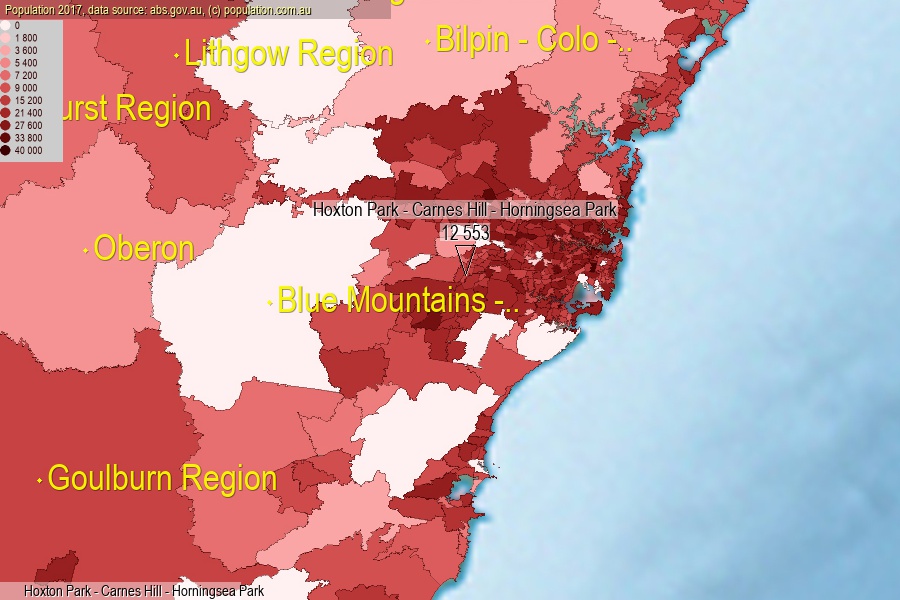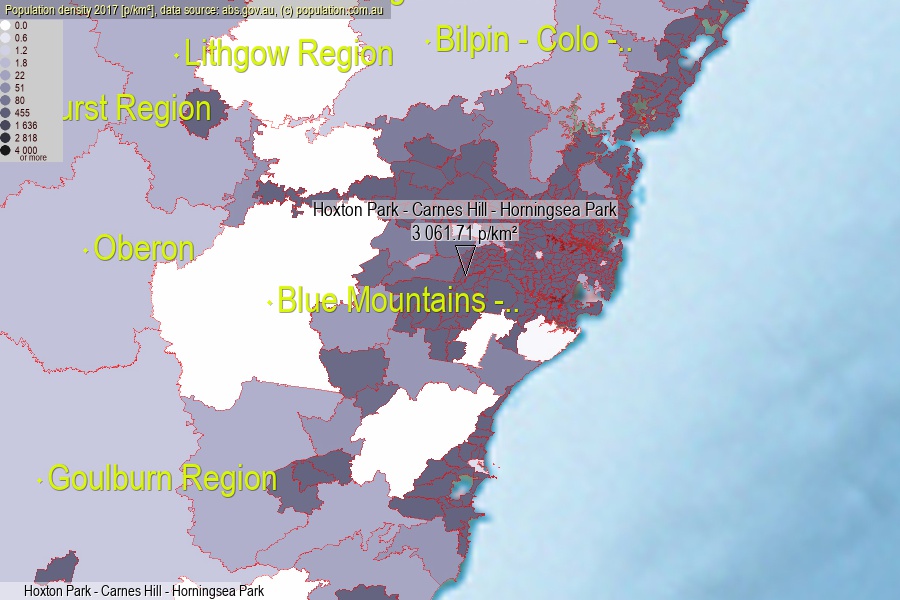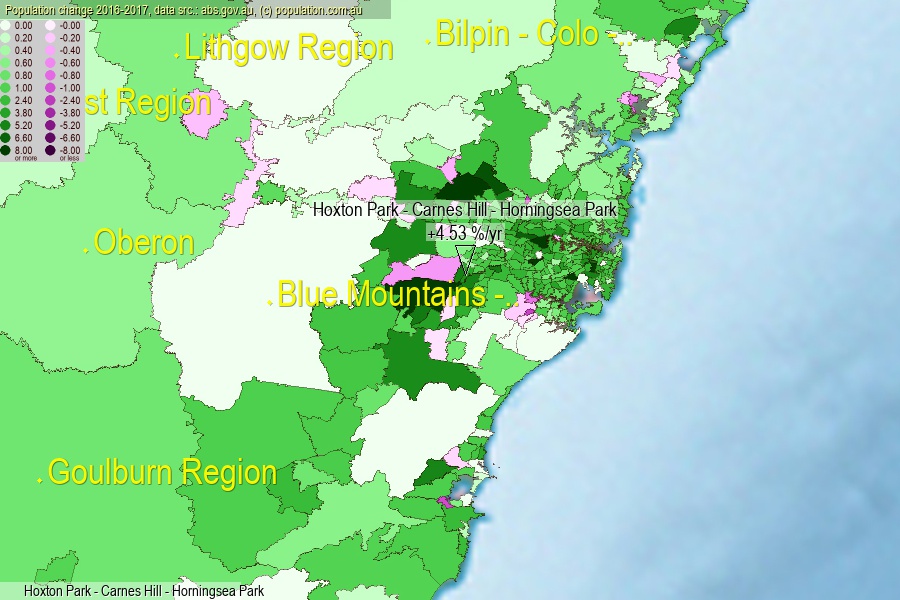 population.com.au
population.com.auLast official estimated population of Hoxton Park - Carnes Hill - Horningsea Park (as Statistical Area Level 2) was 12 553 people (on 2017-06-30)[2]. This was 0.05% of total Australian population and 0.158% of NSW population. Area of Hoxton Park - Carnes Hill - Horningsea Park is 4.10 km², in this year population density was 3 061.71 p/km² . If population growth rate would be same as in period 2016-2017 (+4.53%/yr), Hoxton Park - Carnes Hill - Horningsea Park population in 2025 would be 17 893. [0]



Click to enlarge. Hoxton Park - Carnes Hill - Horningsea Park is located in the center of the images.
Population [people], population density [p./km²] and population change [%/year] [2]
View borders » (new window) [4]
[2001-2002] +5.60 %/Yr.
[2002-2003] +3.19 %/Yr.
[2003-2004] +2.92 %/Yr.
[2004-2005] +2.05 %/Yr.
[2005-2006] +3.03 %/Yr.
[2006-2007] +1.37 %/Yr.
[2007-2008] +2.64 %/Yr.
[2008-2009] +0.83 %/Yr.
[2009-2010] +2.11 %/Yr.
[2010-2011] +1.89 %/Yr.
[2011-2012] +3.33 %/Yr.
[2012-2013] +5.11 %/Yr.
[2013-2014] +6.08 %/Yr.
[2014-2015] +6.00 %/Yr.
[2015-2016] +5.39 %/Yr.
[2016-2017] +4.53 %/Yr.
[0] Calculated with linear interpolation from officially estimated population
[1] Read more about SA2 and Australian Statistical Geography Standard (ASGS) on abs.gov.au
[2] Population data from Australian Bureau of Statistics (Population and density: 2017; change: 2016-2017)
[3] Digital Boundaries: Australian Statistical Geography Standard (ASGS) 2016.
[4] Border coordinates are simplifyed using Ramer-Douglas-Peucker algorithm.